WGSN report: Sustainable development in 2019
Scenarios for the fight for a better, ecological and sustainable future in today's world. According to WGSN in 2019. Craft, local cooperation and … repair will be the leader. What modern companies are put on and what consumers expect? Or idea sustainability She also reached Poland?
Sustainable development = mission (IM) Possible?
Sustainable development has many dimensions today. For some, it is primarily to ensure humanitarian working conditions. For others, production methods in line with the environment, control over used resources and raw materials.
It seems that the world is slowly beginning to understand the being sustainability . Clothing giants are increasingly deciding to join the coalition, which conducts audits in factories, thus ensuring that working in them is done according to the adopted occupational health and safety standards. Others focus on raw materials – They give up using plastic and replace it with environmentally friendly biodegradable materials (like M.in. in the case of McDonald’s or Starbucks). Some of the companies – in particular those from the luxury industry that can afford a little more – go a step further. Stella McCartney works with laboratories and start-ups technological to create your own raw materials and thus "relieve" the natural environment (so -called. Mylo or "skin" from mushrooms). Gabriela Hearst resigns from skewing trial designs, thus minimizing production waste to a minimum.
Millennial guarding
According to the report "Global Corporate Sustainability Report" Nielsen from 2018., up to 85% of the group of tested millennials, considers the efforts of companies in the field of sustainable development as a particularly important area of their activities. It is not surprising that this group is – considered by many as the future of trade – will be most interested in buying products from the category sustainable. It is believed that only until 2021. Sustainable shopping millennials They will be $ 150 billion!
Brands that will gain a reputation in the field of strategies directed at today's youngest consumers have the opportunity not only to increase market share, but also to build loyalty among millennials, i.e. the most important customers of tomorrow – explained Grace Farraj, SVP, Public Development & Sustainability, Nielsen.
In this situation, it seems that companies should not have any doubts as to the implementation of the (sustainable) development strategy. However, as it turns out, the matter is not so simple. Research conducted by PWC indicates that while 72% of companies refer to the purposes of sustainable development of the UN in its assumptions, only 27% of these companies include sustainable consumption and production in its strategies. What about other companies? Did they not care about the consumer, which – as the research shows – depends on sustainable development?
The WGSN agency considering this problem in this problem, which was in question and describing trends. In their latest report, WGSN researchers explain how in 2019. reconcile the expectations focused on sustainable development of customers with the capabilities of companies, all based on the forming trends.
The customer is our master
As many as 88% of respondents carried out in 2018. CONE/PORTER PORTER PURPOSE Studies on building ties with clients, more often selects brand products that work according to specific rules and strive for a established and widely communicated goal. In addition, such action means that as many as 79% of respondents are willing to "remain" with the brand and return to it during subsequent purchases. The results speak for themselves. Customers focused on sustainable development, they expect the same from Marek. So they have nothing else to do with sustainability part of your own strategy. For customers and for the environment.
Clothing chains already understandable. Ecological cotton, natural premium materials or clothes collection programs are the standard in the offer of the largest fashion companies today. There are also brands that base all their strategies on the assumptions of sustainable development. Example? American brand Reformation. Produces in carefully selected factories from the best materials. Customers have the option of tracking the production process and the "environmental cost" thanks to exact information on the website. Elements have a similar strategy in Poland. The brand's activity is based on three basic principles – "Price transparency", "Production transparency" and "Social Trust". Each of the clothes with the tag. Elements are provided with accurate information about the place of production and the cost of production. In addition, the brand is a minimum of 1% of the price of each product for pro -social activities.
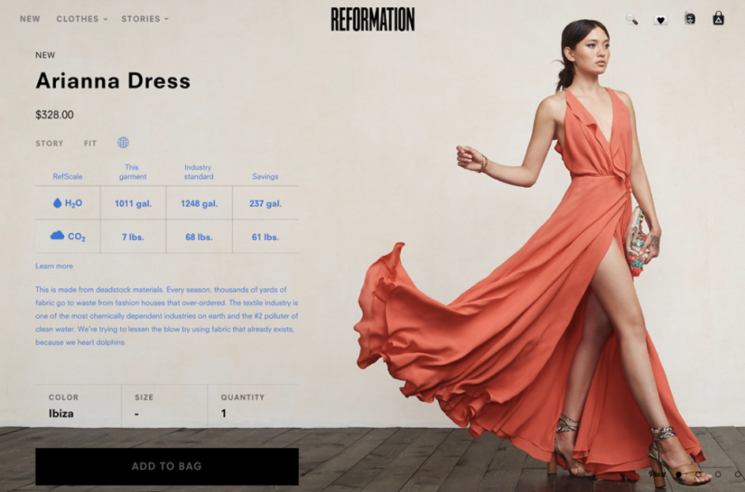 Source: reformation.com
Source: reformation.com
Act locally
According to WGSN. Joint initiatives, supporting smaller factories, sharing work. In Poland, a good example of such actions can be a project Woshwosh , Polish loss-up dealing with footwear repair. The company shared its orders with one of the oldest shoemaker's plants in Warsaw, which was in the financial trouble. The action, publicized in the media, not only caused popularity to both companies, but saved the local Szewski plant before closing.
Global companies also operate locally. IKEA "Wardrobe" is a wardrobe in which residents – in this case the Tri -City – can leave used clothes in good condition in the wardrobe. IKEA will ensure that the things left to go to the needy, "saving" the natural environment.
Thanks to this action, we want to encourage people to help those in need, but we also refer to our central #Przydasy campaign, which draws attention to the problem of excess things. By passing us your unused clothes, you can not only help other people, but also the planet – translated the portal portal.pl Blanka Gniewkowska, specialist in. Marketing IKEA Gdańsk.
Recycling afresh
The topic of recycling has been a top for years. In Poland, mainly in connection with the new regulations regarding garbage segregation, the rules of their processing and high fees for not complying with the guidelines. It is said that it is better late than never and it is probably true. Fortunately, unlike consumers who are just getting to know waste management techniques, this topic is already well mastered. Fashion brands introduce entire collections based on materials from recycling . And it's not just about processed textiles. On the market there are fiber clothes made of converted plastic bottles, or – as in the offer of the British brand Matt&Nat – Accessories made of secondary tires, cork or nylon.
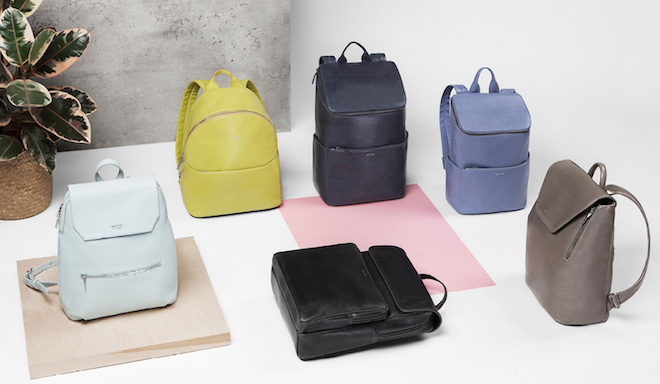 Matt accessories&Nat, source: twinmagazine.com
Matt accessories&Nat, source: twinmagazine.com
Life again ..
… or repair. Favorite shoes, recalling memories of a dress or purse-southern bag. Tired of galloping trends and endless purchases, customers begin to appreciate the quality and put it to quantity. Clothes and accessories vintage, "With a soul", somewhat worn, but still with the future – today customers value. Therefore, they are increasingly deciding to repair instead of replacing. The interest of customers is focused on small craft, movements do it youngf, upcycling. "Life extension" is also offered by fashion brands by introducing indefinite repairs of their products ( Chanel , Tiffany). Others – in particular young brands – like Bethany Williams or Re; Code focus on Upcycling. Their collections are based mainly on clothes found in Second Handach. However, not only. Armchairs and even airbags are also useful. Nothing will be wasted in fashion?
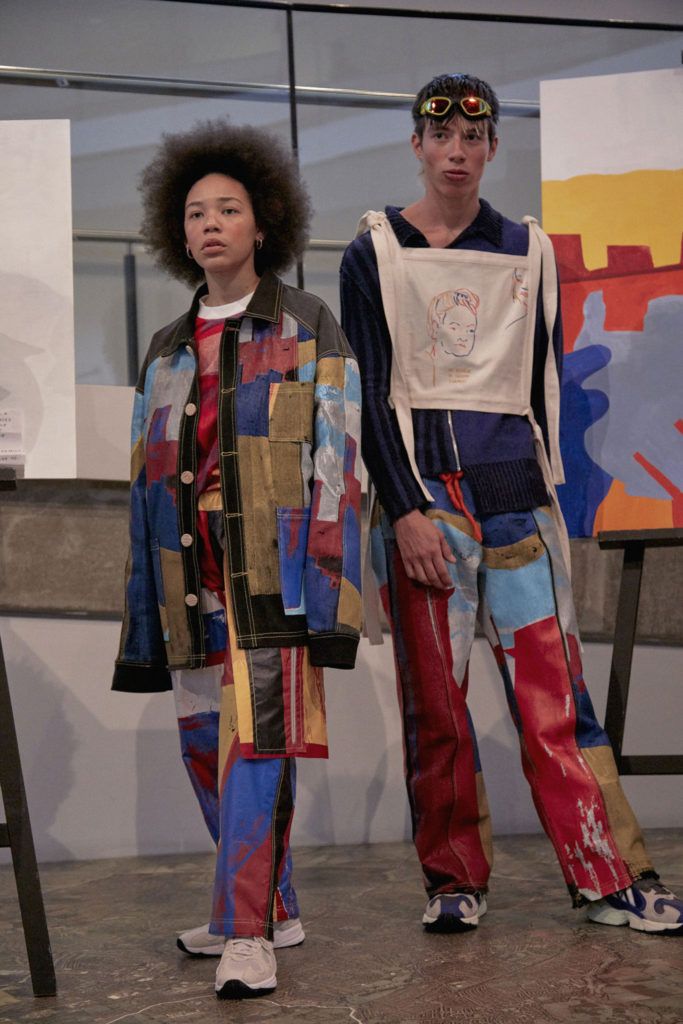 Upcycling Bethany Williams collection for men, source: WWD.com
Upcycling Bethany Williams collection for men, source: WWD.com
Sought alternative
For leather, fur and other natural raw materials, whose availability is very limited, and often inhumant obtaining. The pioneer in this topic is Stella McCartney, but others brandy They don't lag behind. The Salvatore Ferragamo brand has created a capsule collection based on material created from … citrus.
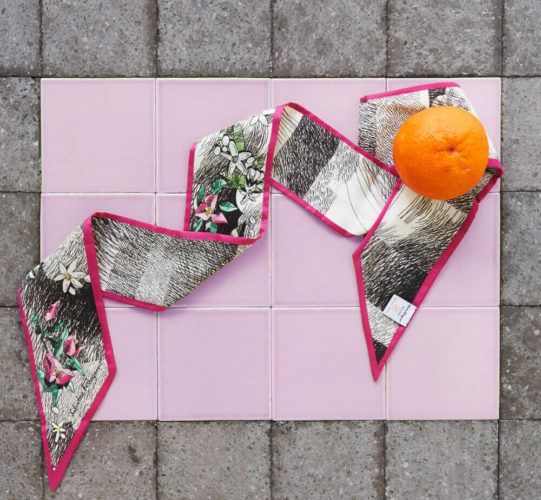 A scarf from the capsule collection from Salvatore Farragamo created using Orange Fiber, source: Ferragamo.com
A scarf from the capsule collection from Salvatore Farragamo created using Orange Fiber, source: Ferragamo.com
It is also available on the market pineapple skin ("PINATEX") whether the material was created in the process of processing coconut fibers.
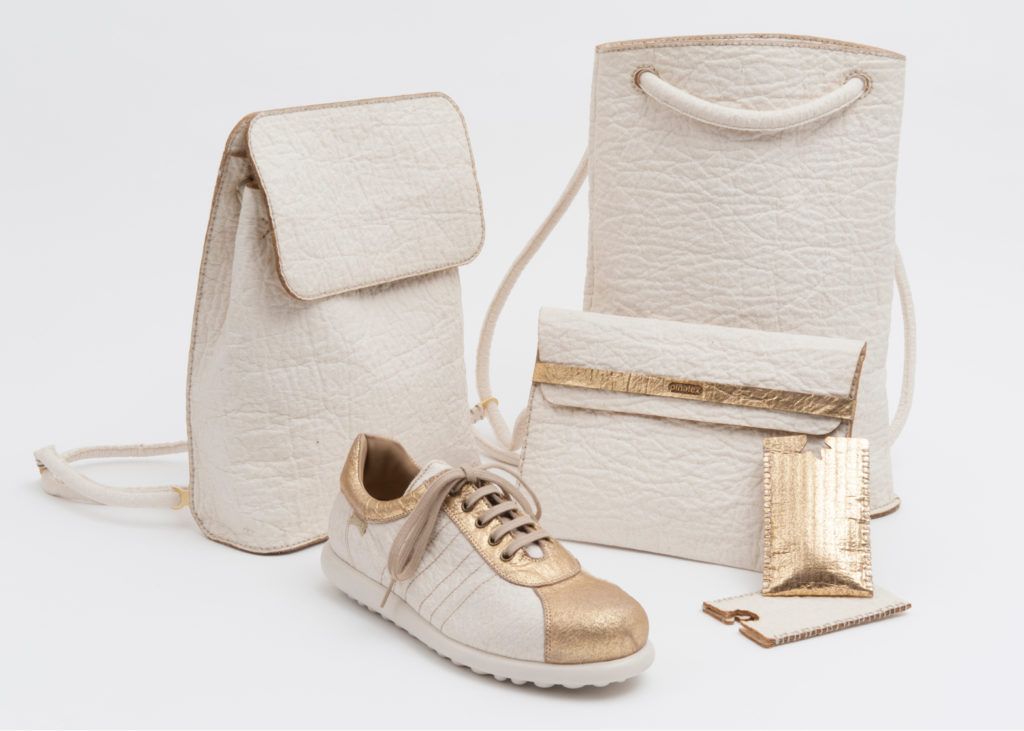 Additions and accessories from pineapple leather, source: Deezeen.com
Additions and accessories from pineapple leather, source: Deezeen.com
The Polish market is loud about Bio2Materials, a brand that creates materials of ecological origin. Recently, the brand became famous for his wallet with … apple pomace. Whether the fruit skin will replace animal?
According WGSN The above ideas will dominate the discussion around sustainability undertaken by companies and clients. Certainly, however, these are not the only actions to consider. Reduction of plastic consumption, economical handling of water resources, searching for new, available alternatives to natural raw materials – Ideas can be multiplied. The most important thing, however, would be companies and (above all?) willingness to implement them. Only then will sustainable development make sense.